|
시장보고서
상품코드
1642729
폴리페닐렌 설파이드(PPS) 시장 보고서 : 유형, 재활용성, 용도, 지역별(2025-2033년)Polyphenylene Sulfide (PPS) Market Report by Type (Linear PPS, Cured PPS, Branched PPS), Recyclability (Virgin, Recycled), Application (Automotive, Electrical and Electronics, Aerospace, Medical/Healthcare, and Others), and Region 2025-2033 |
||||||
세계의 폴리페닐렌 설파이드(PPS) 시장 규모는 2024년에 19억 달러에 달했습니다. 향후 IMARC Group은 2033년에는 28억 달러에 달하며, 2025-2033년의 성장률(CAGR)은 4.23%에 달할 것으로 예측하고 있습니다.
폴리페닐렌설파이드(PPS)는 반결정성 열가소성 플라스틱으로 p-치환된 벤젠과 황의 복수의 방향족 고리로 구성되어 있습니다. PPS는 높은 내화학성, 내마모성, 내마모성, 치수 안정성, 기계적 강도 등 다양한 장점을 가지고 있으며, 가볍고, 녹지 않으며, 내열성, 내화학성, 내마모성, 치수 안정성, 기계적 강도 등 다양한 장점을 가지고 있습니다. 또한 가볍고, 융점이 높고, 점도지수가 낮기 때문에 원하는 모양으로 성형할 수 있습니다. 그 결과 PPS는 항공우주, 의료, 자동차, 전기-전자 등 다양한 산업에서 폭넓게 사용되고 있습니다.
폴리페닐렌설파이드(PPS) 시장 동향 :
PPS는 기화기, 배기가스 환류 밸브, 조명 시스템, 점화판 등 고온에 지속적으로 노출되는 자동차 부품의 제조에 널리 사용되고 있으며, 항공우주 및 방위 산업에서 제품 수요 증가는 시장 성장을 가속하고 있습니다. 또한 PPS는 항공기 날개, 동체, 좌석 프레임, 인테리어 패널, 고온 덕트 등에 사용되는 복합재료의 제조에 활용되고 있으며, 항공우주 및 방위산업 분야의 제품 수요 증가가 시장 성장을 촉진하고 있습니다. 또한 저배출, 친환경 PPS 개발 등 다양한 제품 혁신이 시장 성장의 원동력이 되고 있으며, PPS는 열화학물질의 배출과 열 열 열화를 억제하고 염소 성분을 포함하지 않습니다. 기타 석탄발전소의 필터백 및 먼지챔버 제조에 대한 활용이 증가하고 있으며, 전기자동차(EV) 수요 증가와 함께 더 높은 점착성과 우수한 충격 강도를 가진 선형 PPS가 널리 채택되고 있는 점 등이 시장 성장을 촉진할 것으로 예상됩니다.
이 보고서에서 다룬 주요 질문
- 2024년 세계 폴리페닐렌설파이드(PPS) 시장 규모는?
- 2025-2033년 세계 폴리페닐렌설파이드(PPS) 시장의 예상 성장률은?
- 세계 폴리페닐렌설파이드(PPS) 시장을 촉진하는 주요 요인은?
- COVID-19가 세계 폴리페닐렌설파이드(PPS) 시장에 미치는 영향은?
- 세계 폴리페닐렌설파이드(PPS) 시장의 유형별 분류는?
- 세계 폴리페닐렌설파이드(PPS) 시장의 용도별 시장 현황은?
- 세계 폴리페닐렌설파이드(PPS) 시장의 주요 지역은?
- 세계 폴리페닐렌설파이드(PPS) 시장의 주요 기업은?
목차
제1장 서문
제2장 조사 범위와 조사 방법
- 조사의 목적
- 이해관계자
- 데이터 소스
- 1차 정보
- 2차 정보
- 시장 추정
- 보텀업 어프로치
- 톱다운 어프로치
- 조사 방법
제3장 개요
제4장 서론
- 개요
- 주요 업계 동향
제5장 세계의 폴리페닐렌 설파이드(PPS) 시장
- 시장 개요
- 시장 실적
- COVID-19의 영향
- 시장 예측
제6장 시장 내역 : 유형별
- 선형 PPS
- 시장 동향
- 시장 예측
- 경화 PPS
- 시장 동향
- 시장 예측
- 분기형 PPS
- 시장 동향
- 시장 예측
제7장 시장 내역 : 재활용성
- 버진
- 시장 동향
- 시장 예측
- 재활용
- 시장 동향
- 시장 예측
제8장 시장 내역 : 용도별
- 자동차
- 시장 동향
- 시장 예측
- 전기·전자
- 시장 동향
- 시장 예측
- 항공우주
- 시장 동향
- 시장 예측
- 의료/헬스케어
- 시장 동향
- 시장 예측
- 기타
- 시장 동향
- 시장 예측
제9장 시장 내역 : 지역별
- 북미
- 미국
- 캐나다
- 아시아태평양
- 중국
- 일본
- 인도
- 한국
- 호주
- 인도네시아
- 기타
- 유럽
- 독일
- 프랑스
- 영국
- 이탈리아
- 스페인
- 러시아
- 기타
- 라틴아메리카
- 브라질
- 멕시코
- 기타
- 중동 및 아프리카
- 시장 동향
- 시장 내역 : 국가별
- 시장 예측
제10장 SWOT 분석
- 개요
- 강점
- 약점
- 기회
- 위협
제11장 밸류체인 분석
제12장 Porter's Five Forces 분석
- 개요
- 바이어의 교섭력
- 공급 기업의 교섭력
- 경쟁의 정도
- 신규 진출업체의 위협
- 대체품의 위협
제13장 가격 분석
제14장 경쟁 구도
- 시장 구조
- 주요 기업
- 주요 기업의 개요
- British Plastics Federation
- Celanese Corporation
- DIC Corporation
- Kolon Plastics Inc.
- Kureha Corporation
- Polyplastics Co. Ltd.(Daicel Corporation)
- Ryan Plastics Limited
- SK Chemicals Co. Ltd.
- Solvay S.A
- Teijin Limited
- Toray Industries Inc.
- Tosoh Corporation
The global polyphenylene sulfide (PPS) market size reached USD 1.9 Billion in 2024. Looking forward, IMARC Group expects the market to reach USD 2.8 Billion by 2033, exhibiting a growth rate (CAGR) of 4.23% during 2025-2033.
Polyphenylene sulfide (PPS) is a semi-crystalline thermoplastic that consists of multiple aromatic rings of p-substituted benzene and sulfur. It is widely used in felt filter media for high-temperature air filters, coil formers, bobbins, slurry coatings, terminal blocks, relay components, specialty membranes and packaging. PPS exhibits various advantageous properties, such as high chemical and abrasion resistance, dimensional stability and mechanical strength. It is also lightweight in nature and has a high melting point and low viscosity index that assists it to be molded in the desired shapes. As a result, PPS finds extensive application across various industries, such as aerospace, medical, automotive, electrical and electronics.
Polyphenylene sulfide (PPS) Market Trends:
Significant growth in the automotive industry across the globe is creating a positive outlook for the market. PPS is widely used in the manufacturing of automobile components, such as carburetors, exhaust gas return valves, lighting systems and ignition plates, that are constantly exposed to high temperatures. Additionally, the increasing product demand in the aerospace and defense industries is favoring the market growth. PPS is utilized in the production of composites used in wings, fuselage, seat frames, interior panels and high temperature ducting. Moreover, various product innovations, such as the development of low-emission and eco-friendly PPS, are providing a thrust to the market growth. It aids in reducing thermo-chemical emissions, thermal degradation and contains no chlorine components. Other factors, including the increasing product utilization for the manufacturing of the filter bags and dust chambers in coal power plants and widespread adoption of linear PPS due to its higher tenacity and better impact strength, along with the increasing demand for electric vehicles (EVs), are anticipated to drive the market toward growth.
Key Market Segmentation:
Breakup by Type:
Linear PPS
Cured PPS
Branched PPS
Breakup by Recyclability:
Virgin
Recycled
Breakup by Application:
Automotive
Electrical and Electronics
Aerospace
Medical/Healthcare
Others
Breakup by Region:
North America
United States
Canada
Asia-Pacific
China
Japan
India
South Korea
Australia
Indonesia
Others
Europe
Germany
France
United Kingdom
Italy
Spain
Russia
Others
Latin America
Brazil
Mexico
Others
Middle East and Africa
Competitive Landscape:
The competitive landscape of the industry has also been examined along with the profiles of the key players being British Plastics Federation, Celanese Corporation, DIC Corporation, Kolon Plastics Inc., Kureha Corporation, Polyplastics Co. Ltd. (Daicel Corporation), Ryan Plastics Limited, SK Chemicals Co. Ltd., Solvay S.A, Teijin Limited, Toray Industries Inc. and Tosoh Corporation.
Key Questions Answered in This Report
- 1. What was the size of the global Polyphenylene Sulfide (PPS) market in 2024?
- 2. What is the expected growth rate of the global Polyphenylene Sulfide (PPS) market during 2025-2033?
- 3. What are the key factors driving the global Polyphenylene Sulfide (PPS) market?
- 4. What has been the impact of COVID-19 on the global Polyphenylene Sulfide (PPS) market?
- 5. What is the breakup of the global Polyphenylene Sulfide (PPS) market based on the type?
- 6. What is the breakup of the global Polyphenylene Sulfide (PPS) market based on the application?
- 7. What are the key regions in the global Polyphenylene Sulfide (PPS) market?
- 8. Who are the key players/companies in the global Polyphenylene Sulfide (PPS) market?
Table of Contents
1 Preface
2 Scope and Methodology
- 2.1 Objectives of the Study
- 2.2 Stakeholders
- 2.3 Data Sources
- 2.3.1 Primary Sources
- 2.3.2 Secondary Sources
- 2.4 Market Estimation
- 2.4.1 Bottom-Up Approach
- 2.4.2 Top-Down Approach
- 2.5 Forecasting Methodology
3 Executive Summary
4 Introduction
- 4.1 Overview
- 4.2 Key Industry Trends
5 Global Polyphenylene Sulfide (PPS) Market
- 5.1 Market Overview
- 5.2 Market Performance
- 5.3 Impact of COVID-19
- 5.4 Market Forecast
6 Market Breakup by Type
- 6.1 Linear PPS
- 6.1.1 Market Trends
- 6.1.2 Market Forecast
- 6.2 Cured PPS
- 6.2.1 Market Trends
- 6.2.2 Market Forecast
- 6.3 Branched PPS
- 6.3.1 Market Trends
- 6.3.2 Market Forecast
7 Market Breakup by Recyclability
- 7.1 Virgin
- 7.1.1 Market Trends
- 7.1.2 Market Forecast
- 7.2 Recycled
- 7.2.1 Market Trends
- 7.2.2 Market Forecast
8 Market Breakup by Application
- 8.1 Automotive
- 8.1.1 Market Trends
- 8.1.2 Market Forecast
- 8.2 Electrical and Electronics
- 8.2.1 Market Trends
- 8.2.2 Market Forecast
- 8.3 Aerospace
- 8.3.1 Market Trends
- 8.3.2 Market Forecast
- 8.4 Medical/Healthcare
- 8.4.1 Market Trends
- 8.4.2 Market Forecast
- 8.5 Others
- 8.5.1 Market Trends
- 8.5.2 Market Forecast
9 Market Breakup by Region
- 9.1 North America
- 9.1.1 United States
- 9.1.1.1 Market Trends
- 9.1.1.2 Market Forecast
- 9.1.2 Canada
- 9.1.2.1 Market Trends
- 9.1.2.2 Market Forecast
- 9.1.1 United States
- 9.2 Asia-Pacific
- 9.2.1 China
- 9.2.1.1 Market Trends
- 9.2.1.2 Market Forecast
- 9.2.2 Japan
- 9.2.2.1 Market Trends
- 9.2.2.2 Market Forecast
- 9.2.3 India
- 9.2.3.1 Market Trends
- 9.2.3.2 Market Forecast
- 9.2.4 South Korea
- 9.2.4.1 Market Trends
- 9.2.4.2 Market Forecast
- 9.2.5 Australia
- 9.2.5.1 Market Trends
- 9.2.5.2 Market Forecast
- 9.2.6 Indonesia
- 9.2.6.1 Market Trends
- 9.2.6.2 Market Forecast
- 9.2.7 Others
- 9.2.7.1 Market Trends
- 9.2.7.2 Market Forecast
- 9.2.1 China
- 9.3 Europe
- 9.3.1 Germany
- 9.3.1.1 Market Trends
- 9.3.1.2 Market Forecast
- 9.3.2 France
- 9.3.2.1 Market Trends
- 9.3.2.2 Market Forecast
- 9.3.3 United Kingdom
- 9.3.3.1 Market Trends
- 9.3.3.2 Market Forecast
- 9.3.4 Italy
- 9.3.4.1 Market Trends
- 9.3.4.2 Market Forecast
- 9.3.5 Spain
- 9.3.5.1 Market Trends
- 9.3.5.2 Market Forecast
- 9.3.6 Russia
- 9.3.6.1 Market Trends
- 9.3.6.2 Market Forecast
- 9.3.7 Others
- 9.3.7.1 Market Trends
- 9.3.7.2 Market Forecast
- 9.3.1 Germany
- 9.4 Latin America
- 9.4.1 Brazil
- 9.4.1.1 Market Trends
- 9.4.1.2 Market Forecast
- 9.4.2 Mexico
- 9.4.2.1 Market Trends
- 9.4.2.2 Market Forecast
- 9.4.3 Others
- 9.4.3.1 Market Trends
- 9.4.3.2 Market Forecast
- 9.4.1 Brazil
- 9.5 Middle East and Africa
- 9.5.1 Market Trends
- 9.5.2 Market Breakup by Country
- 9.5.3 Market Forecast
10 SWOT Analysis
- 10.1 Overview
- 10.2 Strengths
- 10.3 Weaknesses
- 10.4 Opportunities
- 10.5 Threats
11 Value Chain Analysis
12 Porters Five Forces Analysis
- 12.1 Overview
- 12.2 Bargaining Power of Buyers
- 12.3 Bargaining Power of Suppliers
- 12.4 Degree of Competition
- 12.5 Threat of New Entrants
- 12.6 Threat of Substitutes
13 Price Analysis
14 Competitive Landscape
- 14.1 Market Structure
- 14.2 Key Players
- 14.3 Profiles of Key Players
- 14.3.1 British Plastics Federation
- 14.3.1.1 Company Overview
- 14.3.1.2 Product Portfolio
- 14.3.2 Celanese Corporation
- 14.3.2.1 Company Overview
- 14.3.2.2 Product Portfolio
- 14.3.2.3 Financials
- 14.3.2.4 SWOT Analysis
- 14.3.3 DIC Corporation
- 14.3.3.1 Company Overview
- 14.3.3.2 Product Portfolio
- 14.3.3.3 Financials
- 14.3.3.4 SWOT Analysis
- 14.3.4 Kolon Plastics Inc.
- 14.3.4.1 Company Overview
- 14.3.4.2 Product Portfolio
- 14.3.4.3 Financials
- 14.3.5 Kureha Corporation
- 14.3.5.1 Company Overview
- 14.3.5.2 Product Portfolio
- 14.3.5.3 Financials
- 14.3.6 Polyplastics Co. Ltd. (Daicel Corporation)
- 14.3.6.1 Company Overview
- 14.3.6.2 Product Portfolio
- 14.3.7 Ryan Plastics Limited
- 14.3.7.1 Company Overview
- 14.3.7.2 Product Portfolio
- 14.3.8 SK Chemicals Co. Ltd.
- 14.3.8.1 Company Overview
- 14.3.8.2 Product Portfolio
- 14.3.8.3 Financials
- 14.3.9 Solvay S.A
- 14.3.9.1 Company Overview
- 14.3.9.2 Product Portfolio
- 14.3.9.3 Financials
- 14.3.9.4 SWOT Analysis
- 14.3.10 Teijin Limited
- 14.3.10.1 Company Overview
- 14.3.10.2 Product Portfolio
- 14.3.10.3 Financials
- 14.3.10.4 SWOT Analysis
- 14.3.11 Toray Industries Inc.
- 14.3.11.1 Company Overview
- 14.3.11.2 Product Portfolio
- 14.3.11.3 Financials
- 14.3.11.4 SWOT Analysis
- 14.3.12 Tosoh Corporation
- 14.3.12.1 Company Overview
- 14.3.12.2 Product Portfolio
- 14.3.12.3 Financials
- 14.3.12.4 SWOT Analysis
- 14.3.1 British Plastics Federation



















